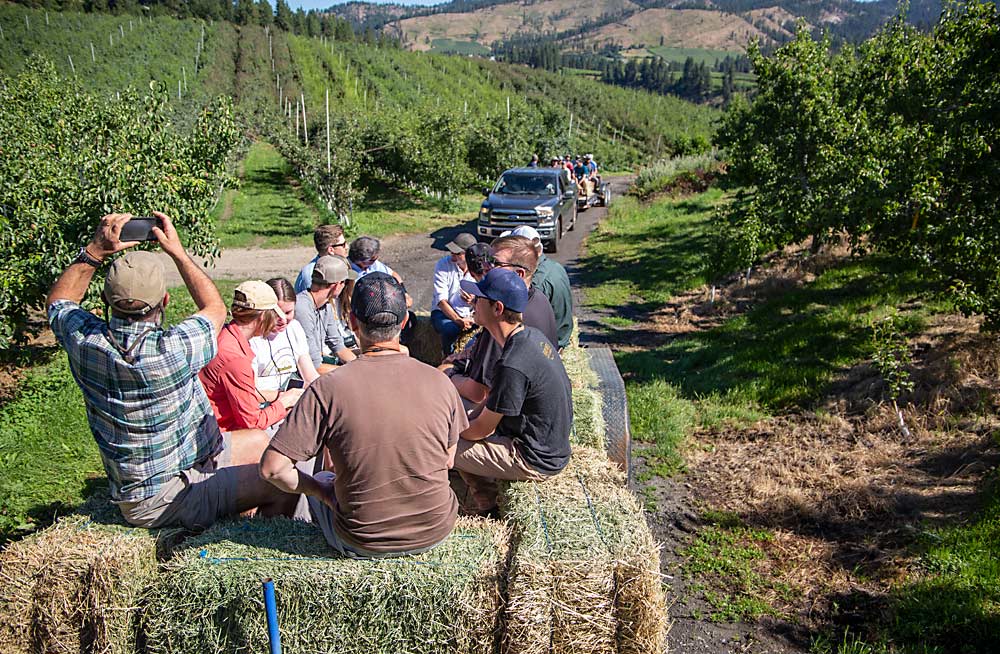
On Day 3 of the International Fruit Tree Association Summer Study Tour, the group split up.
One bus for pear orchards, the other for cherries.
The pear-goers visited two orchards in the verdant Wenatchee River Valley and two orchards near Entiat, north of Wenatchee, along the dusty banks of the Columbia River.
The most scenic and entertaining stop was at the steep slopes of Rudy Prey’s high-altitude pear orchard near the Bavarian-themed city of Leavenworth, where attendees rode on hay-bale-lined trailers and nicknamed the location “IFTA Summer Camp.”
The valley is home to the bulk of Washington’s pears. While many local growers look for new varieties and high-density methods, some blocks have trees nearly 100 years old.
Prey is known for high-density without trellises.
“If a trellis system was free, I’d have it on every acre of my orchard,” he said.
Planting mostly on Old Home by Farmingdale 87 and OHF 97 rootstocks, Prey keeps vigor under control through root competition and two-dimensional pruning.
To maximize light penetration, he alternately ties leaders together to form a near-archway over each drive row. He tried angled planting once, but heavy snows pushed over his trees. So, he now allows trunks to reach 6 feet before training them sideways.
Prey also showed the group a new pear, the Happi Pear, a proprietary variety marketed by Peshastin Hi-Up Growers. He planted them at 2 feet by almost 11 feet, and he has not yet decided his final training system for them.
In Entiat, the bus visited a Stemilt Ag Services block of two-leader Bartletts planted in 2017 and 2018 on a trellis at 6- by 12-foot spacing on OHF 97. The company’s goal is to prune, thin and harvest by platform, said manager Bryan Mrachek.
Right next door, Washington State University maintains a quince rootstock trial that researchers hope will yield a dwarfing option to allow the same high-density methods that apple growers employ. So far, researchers have found numerous quince rootstocks that will work for Bartlett and Anjou pears, with a Comice interstem to avoid graft failure, said Sara Serra, a researcher who led the tour.
The trial has a sister block in the Hood River Valley of Oregon. That one is maintained by Todd Einhorn, a Michigan State University researcher who previously worked for Oregon State University.
High-elevation cherries
Meanwhile, the cherry bus headed into the hills overlooking Wenatchee to visit several cherry orchards.
At a higher elevation, the shorter growing season in the areas known as Wenatchee Heights and Stemilt Hill are best suited to cherries — which harvest from late July to early September, depending on the variety and elevation.
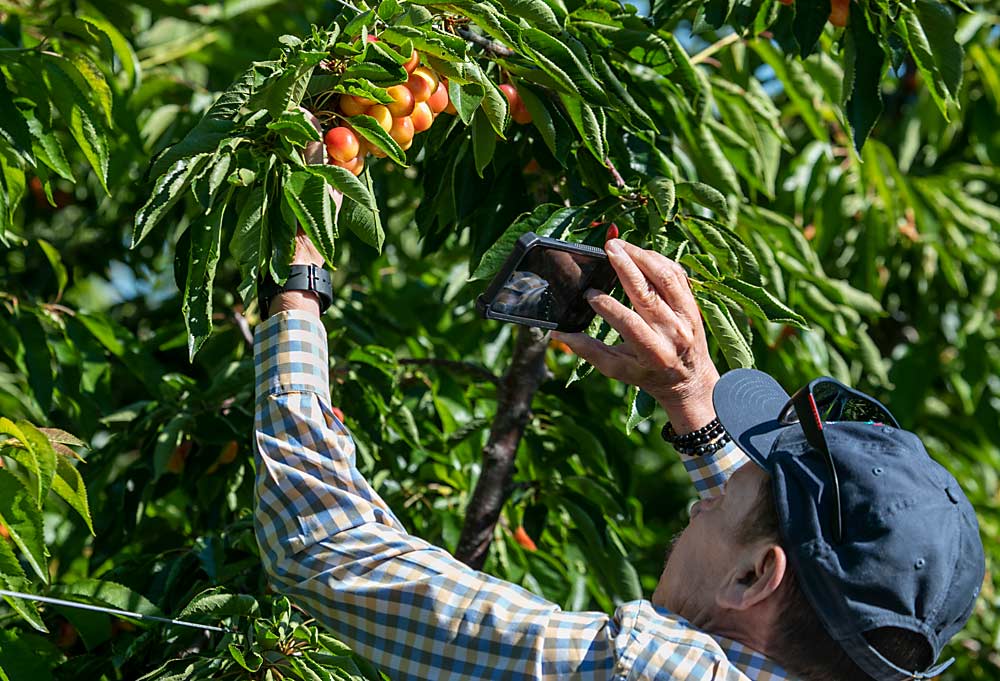
Grower Joe Wiggs invited the tour to a Skylar Rae block that was just a few days from harvest. The block was planted in 2016 on Gisela 6 rootstocks at 8-foot spacing with 12 feet between rows. Wiggs uses a formal training system on a V-trellis, because it’s important to keep fragile blush cherries such as Skylar Rae and Rainier from blowing around in the wind. And it gets windy on his ridgetop site, selected for its good air drainage.
The challenge is that trees on the precocious Gisela rootstocks need a lot of pruning and training. Wiggs said it can be hard to get that done with his seasonal workers, who are often harvesting cherries elsewhere early in the summer. He’d like to do more June pruning to get light, and better color, onto his fruit.
“The best thing you can do in a cherry block is tree training,” he said. “We’re halfway there. All these branches should be on a wire.”
The group also discussed bird deterrents — from garlic extract to lasers.
In the afternoon, the bus headed farther up the hill to 3,000 feet in elevation, where orchards overlook the Columbia River running through Wenatchee at 600 feet. Grower Kyle Mathison told the group about his efforts to expand cherry production to these higher elevations, extending his harvests into the late season window that offers higher prices.
Growing at higher elevation required extensive investment in irrigation infrastructure and in soil amendments to boost productivity in the short growing season. Mathison makes his own compost with residential green waste, manure and apple waste.
When it comes to tree training, Mathison told the group that you must get to know each variety and planting site. For example, in a young Staccato block, planted on Mazzard roots and trained with two leaders, Mathison relies on June pruning to “devitalize the tree” and get the light into the canopy.
“Here, my three loves are Skeena, since we don’t get a lot of rain up here, Staccato and Glory,” he said from a high-elevation orchard. Back down at the bottom of the hill, he prefers earlier cherries such as Coral Champagne and Black Pearl. “You have to learn to dance with every variety.”
More images from Day 3…
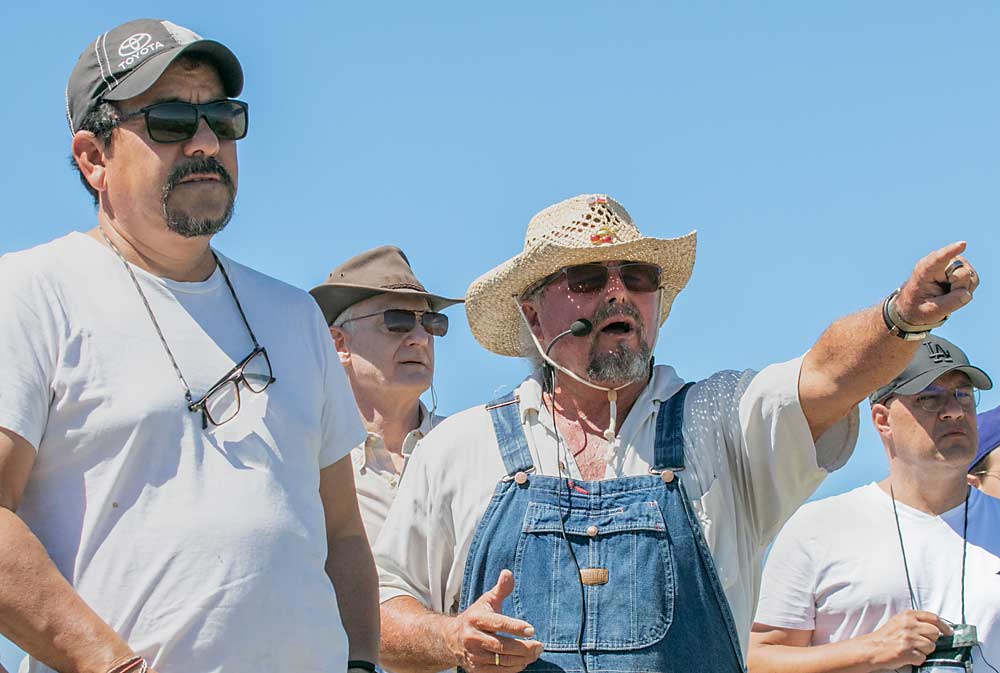
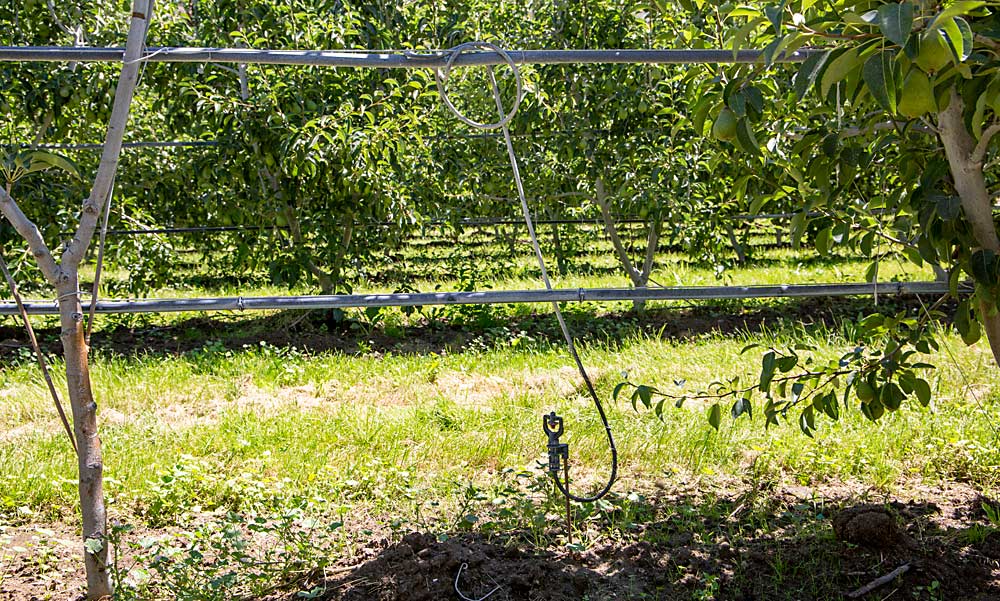
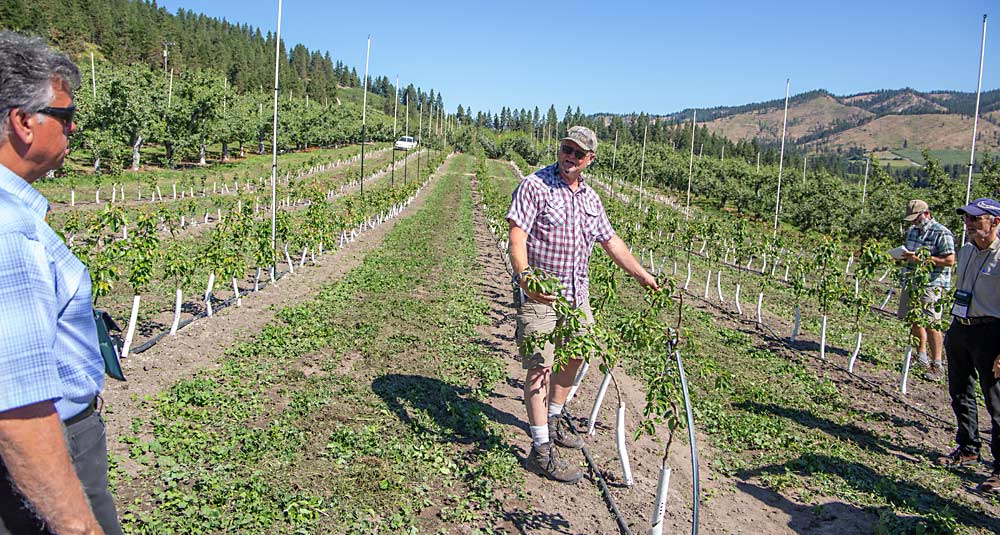
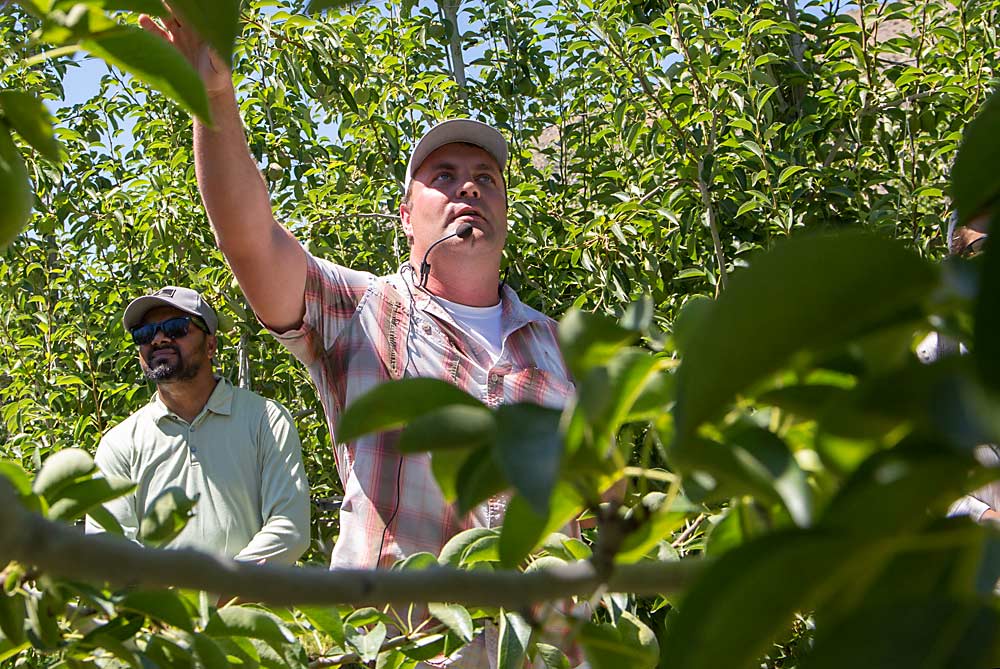
—by Ross Courtney and Kate Prengaman

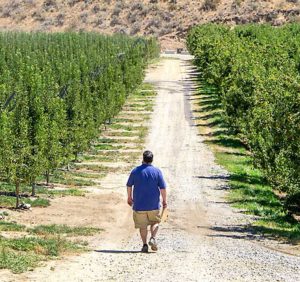
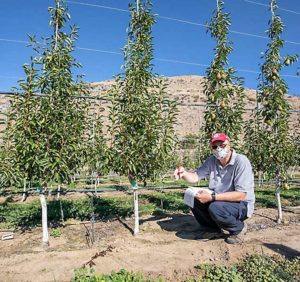
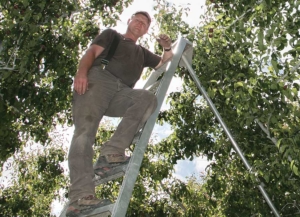
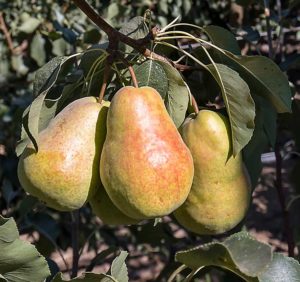
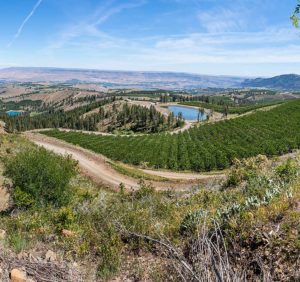





Leave A Comment